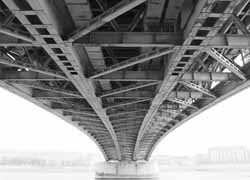Composites patch cracks and corrosion
Conventional techniques to address fatigue and corrosion involve the renewal of welds, application of bolted or welded plates, or even replacement of entire panels. Recently, composite patches have been effectively exploited in the aerospace industry to reduce the maintenance time and cost associated with repair or reinforcement. Scientists employed experimental and numerical techniques to explore their use in ships and bridges with the EU-funded project 'Composite patch repair for marine and civil engineering infrastructure applications' (CO-PATCH) . The team began by defining the regulatory framework for both applications to ensure compliance. They developed a defect inspection and classification procedure to determine which defects are candidates for composite patch repair. Non-destructive testing techniques were evaluated for monitoring the integrity of the patch once applied, and some were shown to be suitable for automated monitoring. Numerical modelling techniques were developed to simulate the behaviour of patched structures. Based on this, the team developed best practice guidelines and application procedures covering evaluation of damage, patch design, composite patch application and repair monitoring. The guidelines also covered regulatory considerations as well as recommended personnel training. CO-PATCH researchers successfully demonstrated the ability of composite patch repairs to reinforce steel structural members through full-scale tests. The technology is environmentally stable, can be classified as a permanent repair, and is equally suitable for marine vessels and civil engineering infrastructures. Implementation will significantly reduce maintenance costs and, in the case of metal bridges, prolong service lifetime. This has important implications for our safety and the competitiveness of related EU industries.







